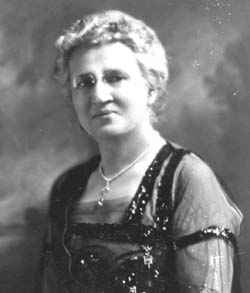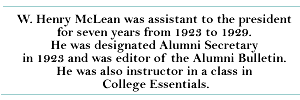
|
Pages: << Back 1 2 3 4 5 6 7 8 9 10 Next >> President
Murlin set the tone for his administration by canvassing students,
faculty, alumni, and others to obtain suggestions concerning the
university's needs. In an attempt to strengthen the academic program
he established faculty committees dealing with educational policy
and the curriculum. A new statement of purpose that stood unchanged
for decades was adopted. In it the university's intellectual aim
was described as "to encourage the search for truth, to develop
the ability to think clearly, accurately, constructively, and fearlessly
on all subjects, and to express (one's) thoughts effectively."
On Murlin's recommendation the faculty also voted to restrict admission
to the university to those graduating in the upper two-thirds of
their high school class.
Under
the new system interest in athletics rose to greater heights. Hundreds
of students, both men and women, participated actively in intramural
sports, while varsity teams chalked up winning seasons in baseball,
football, basketball, and track. A disproportionately large number
of the first persons named to DePauw's Athletic Hall of Fame came
from this period, including John W. Ward '27, Andrew J. Ramsey '30,
Marion L. Crawley '30, and Mary Washburn (Conklin) '28. The last
went on to become the only DePauw athlete to win a medal in the
Olympic Games, when she competed in the women's 400 meter relay
race in Amsterdam in the year of her graduation.
To
strengthen the administration, Dean Edwin Post was joined in 1926
by an associate dean who was placed in charge of academic affairs.
The first incumbent of this office, Professor William W. Sweet of
the history department, resigned the next year to accept a position
at the University of Chicago. He was succeeded by Professor William
M. Blanchard of the chemistry department, who was to have a long
tenure in the deanship. Moreover, two decades after the naming of
a dean of women, the post of dean of men was created in 1926. Named
to that position was Louis H. Dirks, an experienced school administrator
from Indianapolis, who was also appointed professor of secondary
education. It is noteworthy, however, that all these administrators,
as well as the dean of women and the dean of freshman men, remained
part-time members of the teaching faculty.
As
an experienced administrator, Murlin refused to be intimidated by
outside attacks on the academic freedom of the faculty. When members
of the North Indiana Methodist Conference circulated reports about
the alleged lack of orthodoxy in the teaching of the English Bible
at DePauw, he stood firmly by the professor involved. While urging
the teacher to adopt a "better pedagogical method," he
asked for "the broad, tolerant spirit and open mindedness of
Gamaliel and of John Wesley" in his annual report to the Methodist
Annual Conferences.
Perhaps
the most significant accomplishments of the short Murlin presidency
lay in the administration of student affairs. DePauw students had
long chafed against the university's ban on social dancing (born
of the traditional Methodist view that it was immoral, along with
card-playing, theatre-going
and the like). Increasing numbers of students were coming from homes
where dancing was permitted, and it was becoming more and more difficult
to enforce the unpopular prohibition.
This new policy was incorporated in the 1926 Student Handbook, along with an excerpt from the Methodist Discipline warning against the evils of dancing and similar amusements. The die was cast, and, despite vehement opposition from some church quarters, social dancing soon became a recognized part of DePauw's campus activities. It has been suggested that the venerable president was able to defy conservative Methodist opinion in this matter because at his age he had no ambition for a bishopric.
Murlin
also attempted to regulate such matters as fraternity rush and hazing.
The introduction of house mothers - required in sorority houses
since 1919 - into fraternity houses in 1926 undoubtedly served
to ameliorate the sometimes rowdy behavior of their residents. A
most important innovation was the creation of Freshman Week at the
beginning of the fall semester as a period of orientation for new
students conducted by members of the teaching faculty.
The desire to provide residential facilities for non-affiliated men and women at least equal in comfort to the best chapter houses was brought to fruition by the final gifts of Edward and Lucy Rector. At his death in 1925 Edward Rector bequeathed $500,000 to the university for the construction of two dormitories. Longden Hall, erected in 1927 and named for Professor Henry B. Longden, secretary of the Rector Scholarship Fund, offered male residents the same modern features as Rector Hall had furnished women 10 years before.
|
Depauw University e-history | E-mail comments to: archives@depauw.edu


















